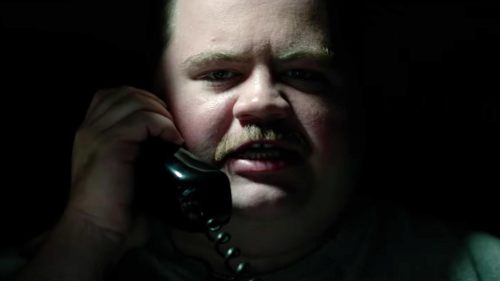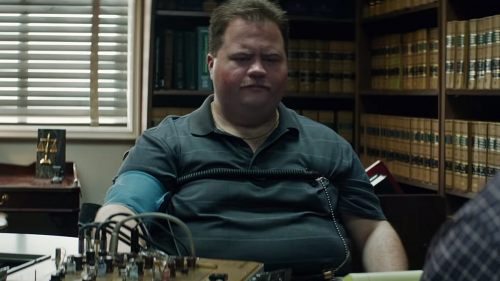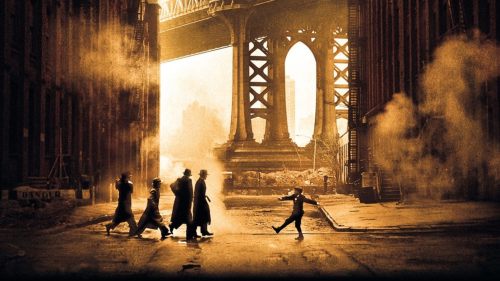Aim For The Heart: A FISTFUL OF DOLLARS At 55
It’s hard to remember a time when Clint Eastwood wasn’t a big deal, but it’s because that time was 55 years ago, before A Fistful of Dollars made him a star and created a whole new mythology not only for the Western genre but the characters who populated its dusty, violent landscapes. Based on Akira Kurosawa’s Yojimbo, the film - which was released in Italy 55 years ago this September - was initially conceived to reinvent Westerns for Italian audiences who’d grown tired of Hollywood’s oldest, most popular but increasingly preachy genre. But its impact was much greater, and broader, than the fleeting glory of a week’s (or even a year’s) box office; it created a template that was adopted not only by American filmmakers in the telling of Western stories, but virtually any storyteller interested in protagonists - including today’s action heroes - who were darker, more mysterious, more complex, and of course, unafraid to employ violence to accomplish their goals. And yet, with more than half a century to look back on its influence, what lingers most is not the film’s brutality or style, but its simple humanity and compassion for the poor and downtrodden, even if you sometimes have to look for it beneath a pile of bodies and several thousand bullets.
What’s sort of amazing is how the movie shows you everything that you need to know, and everything that motivates Joe (Eastwood), better known as The Stranger, or more iconically, “The Man With No Name,” in the very opening scene. Trekking across the desert towards the town of San Miguel, The Stranger stops his horse to drink from a well, where he watches a small child slip out the window of one building and run across to road to another. The child knocks on a door and a woman lets him in, but within moments, he is shunted back into the dust as a pair of menacing pistoleros kick at his heels. When a man runs from the first building to retrieve the boy, the pistoleros beat the man mercilessly as the woman watches in silent agony. Though doing nothing outwardly, The Stranger is in the process deciding to butt his nose in where it does not belong, to help rescue this family, and eventually, a town full of oppressed people stuck between two gangs only too happy to use them as fodder for their turf war.
Of course, the few real survivors in San Miguel have chosen a life of diplomacy and agnosticism between the outlaw Rojos and the corrupt family of the town sheriff, John Baxter. There’s Silvanito (Jose Calvo), a barkeep who warns The Stranger to leave town, and Piripero (Joseph Egger), the coffin-maker that he quickly puts to work. Their philosophy has always been to turn a blind eye, or take only the side that ensures survival for another day, but The Stranger soon forces or perhaps inspires them to take a stand - albeit without grandiose speeches, or quite frankly, almost any speech at all. Though his motives are shrouded in mystery, and his demeanor tight-lipped and mercenary, The Stranger provokes a transformation because he is actually a good person, even if his methods are sometimes, uh questionable.
Early cinema, especially Westerns, adhered to some fairly strict rules of morality - there’s a reason that it’s an enduring cliché for good guys to wear white hats, and bad ones to wear black. Sergio Leone, via The Stranger, changed all of that virtually overnight with this film, because he made his protagonist seem indistinguishable from his foes on screen, and devoted no time at all to explaining who he was or what he was doing, or most importantly, why he was doing it, even if ultimately the arc of his trigger finger bent towards justice. These lessons should be clear enough for audiences who pay attention, but the unfortunate byproduct of Leone’s brilliant vision is that it was so skillfully executed that its style has overshadowed the substance of his message, or at the very least, the thematic nuances of the thrilling journey we just took.
As a modest production even for the time, this scrappy film remains the slightest of the three in Leone’s “Dollars Trilogy,” and several decades and hundreds of Westerns later, it seems almost quaint in its cleverness. But that’s because Leone understood that simple truths are the most important, and most meaningful to explore - even if, as the film’s legacy has shown, they’re also sometimes the easiest to misunderstand. Leone, of course, would go on to exponentially grow with each subsequent Western, both in ambition and scope, finding new ways to filter ideas about justice and morality through colorful characters, violent montages and mesmerizing storytelling. But ultimately, and even with so many knockoffs and imitators, not to mention Leone’s later masterworks, A Fistful of Dollars still feels fresh today - like the lightning in a bottle it was in 1964 - because long after the initial shock of its peerless, remarkable technique dissipates, the meaning unfolds behind its characters’ mysteries, and the emotional weight of its story supplies an inexhaustible charge.



